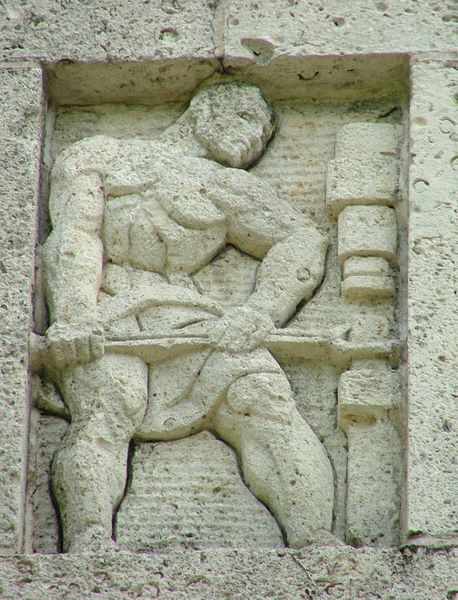|
In 1925, Houston city leaders hatched a plan to build a ‘civic center’ on the western edge of downtown focused on Hermann Square. The civic center was to encompass a library, city hall, municipal auditorium, county courthouse and courts building. The Julia Ideson Library and municipal auditorium (Sam Houston Coliseum, now Bayou Place) were built, but construction of the remainder of the Civic Center became delayed by the Depression.
Fourteen years later, the US Public Works Administration, part of Roosevelt’s New Deal, funded a large portion of the construction of Houston’s City Hall. It was the last structure of the Civic Center that was to be realized. Joseph Finger, a prolific local architect, was hired to design the building. Finger based his design on the Racine County Courthouse in Racine, Wisconsin. The City Hall was built in true New Deal fashion – it is an art deco structure, sheathed in Texas Cordova Shell limestone, with windows set in vertical channels. Decorative ornamentation, from intricate aluminum grilles around the entries to carved relief panels, graces the building.
Remarkably (considering that this is still the home of Houston’s city government) the building, both the interior and exterior, have been little altered since 1939. The Houston Visitors Center is located on the first floor of the building. From the Visitors Center, you can access the beautifully decorated lobby. The floor and ceiling are ornamented with art-deco reliefs and framed by allegorical murals, a creation of Kansas City artist Daniel MacMorris.
|

Exterior relief
|